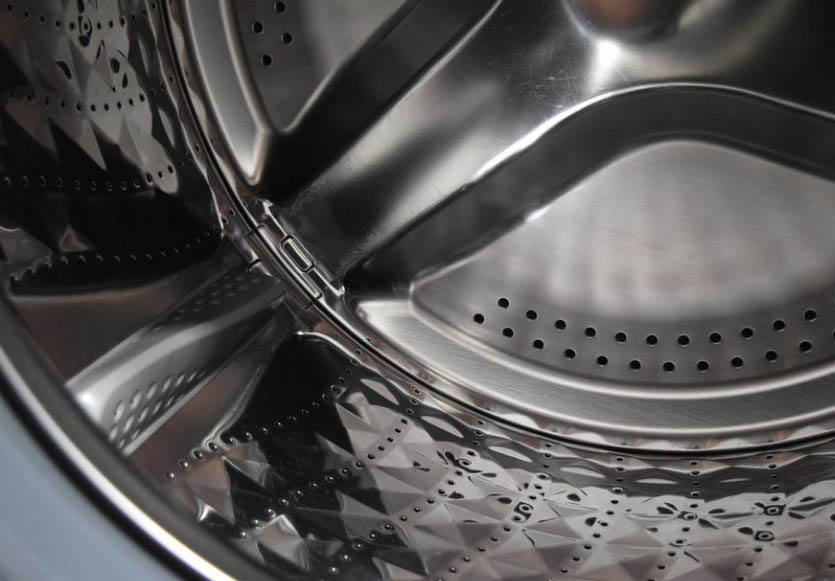If your clothing frequently smells bad when it comes out of the washing machine, it’s more likely a machine problem than anything else. At home, we take great pride in keeping our technology organized. This easy job ensures that the clothing is always as clean as possible.
We’ve looked into a few potential causes and solutions for washing machine odors. When you go to a load of laundry the following time, you won’t smell anything but the wonderful scent of your chosen detergent.
Front Load Vs Top Load Washing Machine
The first consideration when determining how to clean a stinky washer is whether you have a top-load or front-load machine. Although front-loading washers outperform in practically every category, including cleaning efficacy and efficiency, they are more likely to develop smells and mildew over time if they aren’t regularly cleaned.
Due to its design, front-load washing machines are more likely to produce unpleasant odors from the washing machine, soap scum accumulation, and mold and mildew. High-efficiency front-loading washers only fill the bottom half of the washtub with water. Then, rather than needing to completely fill the tub, the clothing are tumbled through the water in the drum.
To use this design, high-efficiency (HE) detergents are required. If non-HE laundry detergents are used in their place, there isn’t enough water to thoroughly flush the cleaners down the drain. A layer of soap scum with dirt and debris from your dirty clothes can build up on the washer drum. Mold and mildew thrive in conditions like these and in the humid heat of your washer.
The rubber door gasket that stops water leaks experiences a similar effect. These gaskets act as catch-alls for debris, soap scum, and other bits, giving office odors yet another place to grow.
What Causes The Smell In My Washing Machine?
Any location that is consistently damp and humid may eventually acquire a smell if you’re not careful. The Centers for Disease Control and Prevention state that wet, dimly illuminated places with standing water can easily support the growth of mold and mildew.
The most prevalent sources of foul smells in washing machines are bacteria, mildew, soap scum, limescale development, or some combination of these four.
According to Consumer Reports, if you have a front-loading washer, using the wrong soaps can prevent the washer from thoroughly cleaning the drum and your clothes, causing a layer of soap scum to accumulate and serve as a breeding ground for bacteria. Additionally, the buildup may penetrate the door gasket and emit odors.
The presence of strong odors in common machines may be a sign of inadequate drainage or an obstruction in the drainage tubes. The majority of the smell should go away once you fix the drain, but you might need to completely rinse your washing machine to get rid of it.
If you wash your clothes at the wrong temperature, you can also be to blame. Even though conserving energy by using cold water during wash cycles is possible, doing so repeatedly will promote the growth of bacteria because it doesn’t generate enough heat to eliminate residue. You’re not compelled to utilize hot wash cycles, though. Other methods can be used to get rid of washing machine smells.
How To Refreshing A Smelly Washing Machine
Follow these three steps to eliminate those unpleasant smells and bring back the clean, fresh scent of your washing machine: scrub, sanitize, and deodorize. Avoid mixing any cleaning agents together as this can be harmful.
STEP 1: Take out the dispensers for your soap, bleach, and fabric softener, and scrub them all thoroughly.
The most important part of washing machine cleaning is managing mold. Bleach is an excellent way to get rid of mold and mildew. Use rubber gloves, ensure there is enough ventilation in the room, and NEVER mix bleach with other cleaners while using this product.
Add two cups of bleach for a front loader and four cups for a top loader.
Start a wash cycle on the highest setting after opening the tub. Stop the wash cycle as soon as the water and bleach have mingled. Allow the cycle to run its course, then give it 30 minutes to rest. Run a rinse cycle to completely get rid of all bleach traces.
STEP 2: Use chlorine bleach to clean your obnoxious washing machine.
Because it is the best method for eliminating mold and mildew, chlorine bleach is a good “go-to” when a washing machine stinks. When using bleach, be sure to follow all safety precautions and avoid combining it with other cleaners for your safety.
How much bleach to use will depend on your washer. 2 or 4 cups of bleach should be added to a front-loading or top-loading washer before starting a cycle. the maximum temperature setting on the washer. Let the tub full and finish the wash cycle as soon as the agitator has thoroughly blended in the bleach. Before beginning the cycle with the bleach water again, 30 minutes should have passed. After one more rinse cycle, there should be no bleach residue remaining.

STEP 3: Follow up with a vinegar wash to get rid of any odors that lingered.
In addition to being a great deodorizer, vinegar also removes hard water deposits and any bacteria that might have survived bleaching thanks to its acidic nature. Start by turning your washer to the hottest setting. For a top-load machine or 2 cups for a front-load model, add 4 cups of plain white vinegar (not balsamic or apple cider). In this cycle, only vinegar should be used; do not use laundry detergent or any other products.
From this point on, the process should be easy to follow: Allow the tub to full, then stop the wash cycle once the agitator has thoroughly mixed the vinegar and water. After the initial 30 minutes, restart the washer and let the cycle run until it is finished.
If stubborn stains continue, scrub the interior of the drum with your washrag or sponge, being sure to get into every nook and cranny including the gasket seal. Any leftover vinegar scent can be eliminated by cleaning the drum. Run a rinse cycle if you want to eliminate everything. Not to mention, you can dab some essential oil over the seal to get rid of odors and serve as a light disinfectant.
STEP 4: Run a service wash with hot water to thoroughly rinse the drum.
The most crucial step in eliminating offensive odors maybe this one. The drum can be thoroughly cleaned to kill bacteria, mold, and mildew as well as get rid of other bad odors.
- For instructions on how to clean the drum, refer to your manufacturer’s instructions. Some people might advise using a specific cleaning agent on the device.
- Pour one cup of distilled white vinegar or bleach into the detergent drawer or, for top-loading models, directly into the drum.
- Set the machine to a long hot cycle. Use the warmest water that is accessible.
- Allow the cycle to complete.
- The machine should be allowed to air dry with the door open.
STEP 5: Clean Your Filter
The machine’s filter, which is normally located at the front, needs to be emptied and cleaned once each month. Your user handbook outlines the precise methods to complete this.
The emergency drain tube should be taken out, the top should be removed, and the water should be allowed to flow into a tub.
If there is a larger opening, place a towel there. Remove the stopper to let the extra water drain. This filter could have dirt, fluff, and other particles on it. Wash this in the sink with hot, soapy water before replacing it.
If you have other problems with washing machines, welcome to check the following guides!
- How to Use Bleach In Your Washing Machine – Is It Safe to Use
- Can You Transport A Washing Machine On Its Side When Moving?
- How to Reset Electrolux Washing Machine With Easy Methods
- Can You Add An Agitator To A Washing Machine – How to Use
- How To Break Into Car Wash Change Machines In Simple Ways?
- How Can I Find Lost Items in the Washing Machine
- How To Install & Vent A Washing Machine Drain Pipe
- How to Reset Your Whirlpool Washing Machine? So Easy!
- How to Level a Washing Machine – Find The Perfect Level
- How To Remove Mold From Rubber Seal Of Washing Machine?
- How Much Does Different Washing Machine Weigh?
- How Long Does a Washing Machine Take to Wash & Dry Clothes?
- Do Converse Shoes Well in a Washing Machine?
- How To Wash A Hat In The Washing Machine? Something You Should Know
- How to Clean Mold from a Washing Machine With Tips
- How to Level a Washing Machine? Step by Step Guide
- Can You Put Crocs In The Washing Machine? You Need Know
- How To Vent A Washing Machine Drain Pipe With Easy Steps











